RAF 100 Group Build: Hawker Hurricane Mk 1. Willie McKnight, No. 242 Sqn. Airfix 1/48. Where was the RAF at Dunkirk? (Part Two).
This article is part of a series:
- RAF 100 Group Build: Westland Lysander. No 4 Sqn, Eduard (Gavia) 1/48. Where was the RAF at Dunkirk? (Part One).
- RAF 100 Group Build: Hawker Hurricane Mk 1. Willie McKnight, No. 242 Sqn. Airfix 1/48. Where was the RAF at Dunkirk? (Part Two).
- RAF 100 Group Build: Supermarine Spitfire Mk 1. Sailor Malan, No. 74 Sqn. Airfix 1/48. Where was the RAF at Dunkirk? (Part Three).
Blitzkrieg was a term the Wermacht never officially adopted, probably because Hitler thought it ‘idiotic' in its simplicity. The view of the Nazi regime was that they were simply reaping the dividends of Germany's superior industrial and technological advances. In Spain, during the civil war, armour had been used in tandem with air cover and dive bombers for the first time. Whatever name was given to them, the shock tactics of ‘lightning war' as it was labelled by the press, had been well practiced. The ruthlessness witnessed in the destruction of Guernica was logically a precursor to the bombing of the public transport system as Poland mobilised during its defensive campaign. Between panzers and paratroopers mainland Europe was rolled over quickly.
After 220 days of ‘no war' to speak of, now in the face of the most shockingly intense attacks, the RAF was forced to throw whatever planes hadn't been destroyed on the ground, at the advancing columns of German troops. The older bombers, the Fairey Battles and the Bristol Blenheims suffered. 40 were shot down in a single day. The Hurricanes kept pouring onto the advancing enemy. In 5 days, 250 aircraft were lost on or over the mainland, and Air Chief Marshall Sir Hugh Dowding reacted to preserve what aircraft he could for the defence of Britain. On the 16th of May the fighters were no longer in action over France. At this point the question ‘Where is the RAF?' may well have been asked.
By May the 24th Boulogne had fallen; Calais was barely hanging on; and the Allied troops were falling back into Gravelines and Dunkirk. Hitler handed the job of finishing the resistance of the BEF and holed up French troops to Luftwaffe commander Goering. The terrain of the mostly destroyed town was not ideal for tanks anyway, and Goering was as full as ever of bravado. The Luftwaffe however had also been fighting for a hard fortnight before the order came, and the efforts of the attacking RAF had weakened it just enough. Field Marshall Albert Kesselring understood this, and not for the last time disagreed with his leaders, recognising the tactic as flawed. As the German forces inexplicably delayed, Operation Dynamo became reality and it was clear that at least limited air support would be needed. Churchill put a fighter umbrella back over the channel and the French coast, and the action was relentless.
On Tuesday the 28th of May, Future Canadian Ace Pilot Officer Willie McKnight of No.242 Sqn flew his Mk 1 Hurricane, adorned with a skeletal reaper and the famous squadron emblem of Hitler being treated to a boot in the backside.
His first taste of action came above Ostend, fighting over the retreating BEF. A Squadron colleague coming through cloud peppered McKnight's Hurricane, blowing off its sump pump. McKnight had just shot a BF109 down into the sea. To cover for his friend, he wrote in his report that he had been hit by the German fighter. The pilots had a famous row when back on base but ended up dissolving in laughter.
Come Wednesday the 29th, 242 were back in action – here is an excerpt from ‘Air Battle for Dunkirk' by Norman Frank describing 20 or more Bf109's engaging the squadron :
“Willie McKnight saw 229 being engaged below and was about to help when the 109's hit 242. He and another Hurricane went after a 109 but then another 109 got behind the other Hurricane. McKnight turned sharply towards the 109, opening fire at point-blank range. The Messerschmitt rolled onto its side and fell straight into the sea. The Canadian swung around after another 109 flying behind a Hurricane. His first burst produced smoke before the 109 dived towards the shore.”
Immediately after that engagement McKnight shot out the port engine of a Dornier Do17 which crashed 90 miles East of Dunkirk.
On Friday the 31st, McKnight claimed an unusual double kill. His fire at the lead plane in a group of Bf110s drove it into the second and both fell in flames. Later that afternoon, with The Canadians back in action he picked off a 109 escorting a group of Heinkel 111s in a huge dog-fight with 30 or so German fighters.
On the afternoon of Saturday the 1st of June, 242 intervened as a large group of Stukas escorted by 109s and 110s (in total approximately 50 German aircraft) carried out a dive-bombing attack on ships anchored north-west of Dunkirk harbour. 7 Hurricanes took on the fight. McKnight managed to splash 2 Stukas in flames and to damage 2 more so that they turned for home. In each case he was chasing them and intervened just as they were about to drop bombs on the shipping. 242 was credited with three Stukas and one 109 destroyed, and two Stukas and two 109s probably destroyed, with no Hurricanes lost.
McKnight was an archetypal airman of the ‘Commonwealth', coming to ‘the motherland's' rescue in times of need. He fought with No.242 Squadron in the Battle of Britain, flying as wingman to Douglas Bader. He was killed in Action along with John Latta, on the 12th of January 1941. Bader was distraught and is said to have been a changed man after the loss of his friend.
On the 3rd of June 1940, Air Vice-Marshal Keith Park (Air Officer Commanding, No.11 Group) wrote the following:
This officer, a Canadian, has shown exceptional skill, determination and courage. He has destroyed eight enemy aircraft as well as attacking successfully heavy guns on the railway east of Dunkirk causing many casualties. I strongly recommend him for the award of the Distinguished Flying Cross.
The same day Air Chief Marshal Hugh Dowding minuted the document as "Approved".
(The Bar was added to his DFC later after further heroics leading his section with 'tenacity and courage').
William Lidstone McKnight has no known grave. His name is on the Runnymede War Memorial.
Where was the RAF at Dunkirk? Regardless of lower numbers or the comparative mismatch they faced when fighting more modern and numerous enemy aircraft, they were to be found flying inland to halt the rapid advance of the enemy; in dogfights with bombers and their escorts to protect those below; and engaging enemy aircraft attacking the shipping that would ultimately accomplish a result to Operation Dynamo way beyond the expectations of any of the leaders back in Britain.
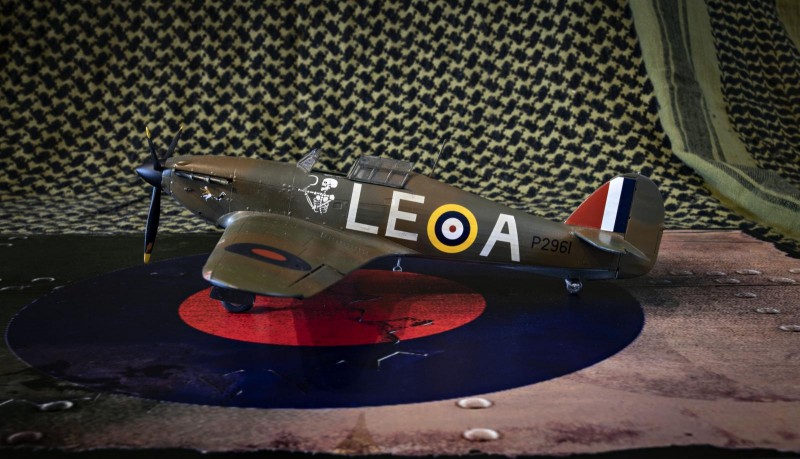
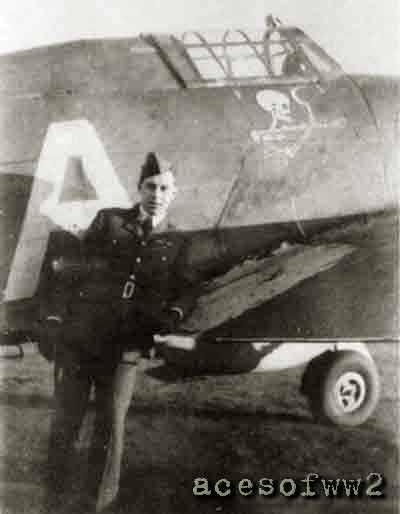
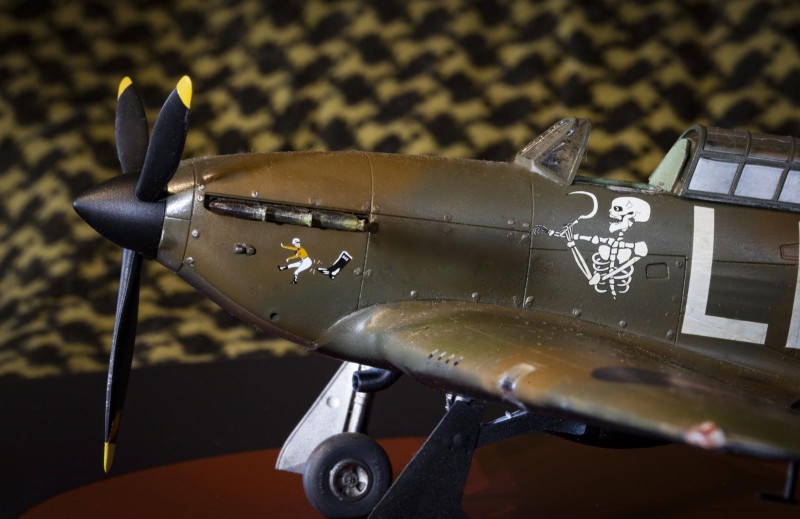

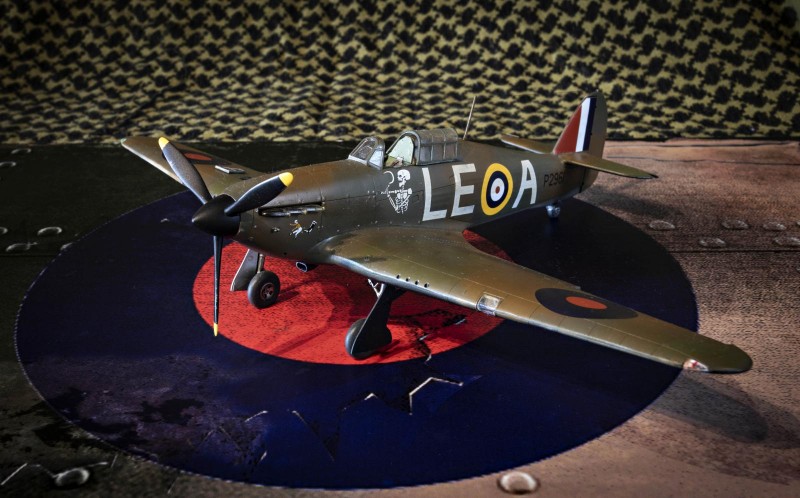
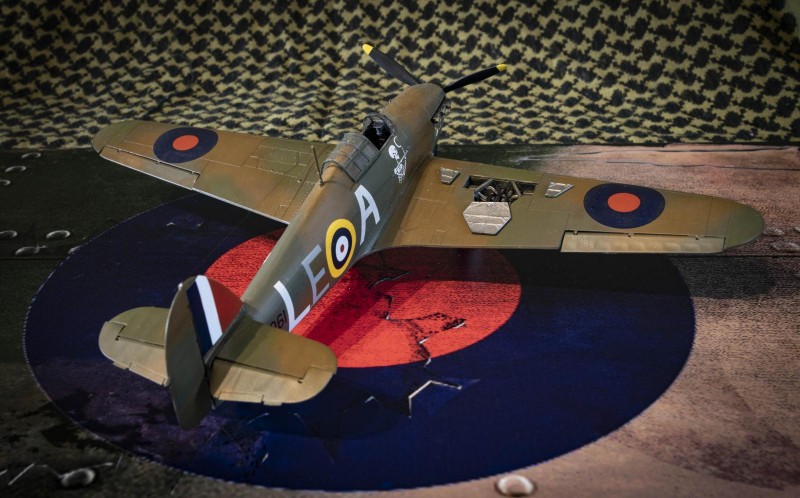
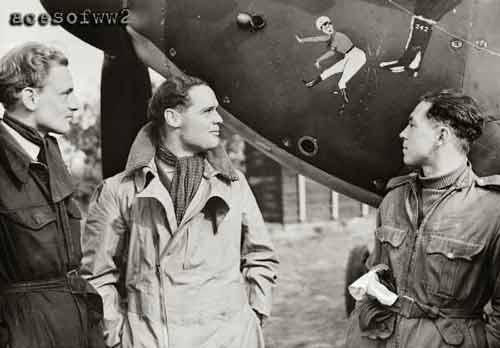
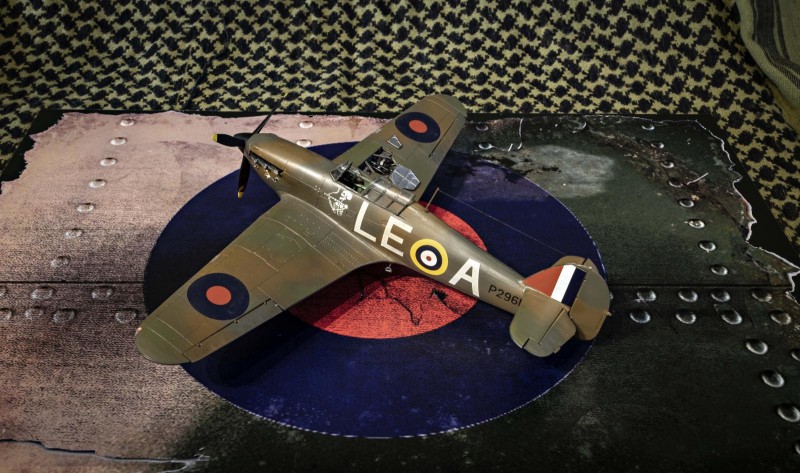
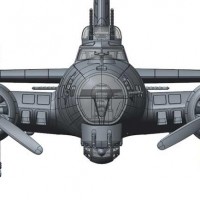
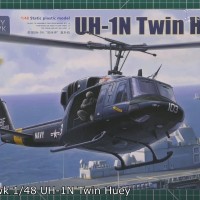


Enjoyed this write up very much. Paul, your hurricane is a real winner, top-notch work. I love the setting you put together for the photos. You’re a pro.
Thanks Matt, wish I was a pro!
Una vez más otra maqueta digna de museo.Unas historias apasionantes paul.
Too kind Julio, thank you!
Very nice! Great display and narrative.
Thank you, Robert!
Great story, great model. Superb work here, Paul.
The stories are always better than the models, Tom. I'd imagine you have told this one a few times!
Another great read and build. My only niggle Paul, to better show your gifts and talents...I wouldn't put a darkly lit camouflaged aircraft on a dark blue round-ale with a dark back round. It shows to good effect on how well you camouflaged the model and it tends to blend in the with the back round. Perhaps if the model where to be shot with a closer shot of the red and blue round-ale with the shot emphasizing your excellent build with a lot more red and brighter lighting. Showing to greater effect the camo and of course the skull. One mans opinion and we all know where the round cabinet is. On the whole the article is fantastic as is the build. Two thumbs up.
I thought long and hard about the photography, Stephen, and I agree it is a little too busy in some cases. I can't tell you how often I moved the camera, the kit, the base or the reflectors I was using to fill in shadows. I was experimenting with these bases from Coastal Kits in the UK for the first time. I like them, but I am going to need another solution around them. Perhaps a light tent?
What is busy is the fabric, the comforter. Remove the brown and tan and replace it with blue craft paper or a suitable paper (affordable and reusable) something lighter than RAF dark blue.
Let me just echoe and say, what a combination...great story and a fantastic model presented here. Top notch work Paul!
Thank you Pedro, very kind, I had a lot of fun with it!
Love a good Hurricane. Cracking.
Thanks Rob, I started of a Spitfire guy - but it is genuinely neck and neck now with the Hurricane!
Excellent work, Paul!
Thank you, John!
Nicely done Paul, looks good.
Thanks, Allan!
That's a fine looking Hurricane Paul and the history lesson is a bonus. Nicely done buddy.
I'll echo the rest: great Hurricane and I appreciate the history. Those Canadians have heart!
I'll jump on the band wagon and add my two cents... basically repeating the compliments posted above.
I like everything about this one my friend !
'liked"